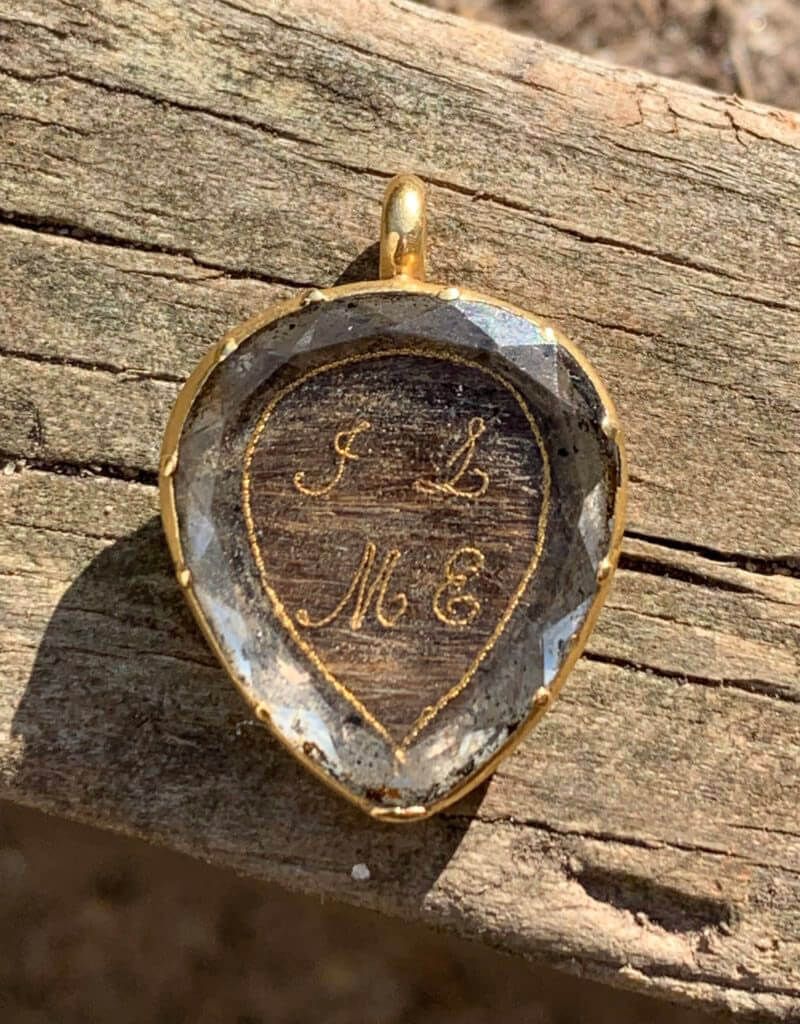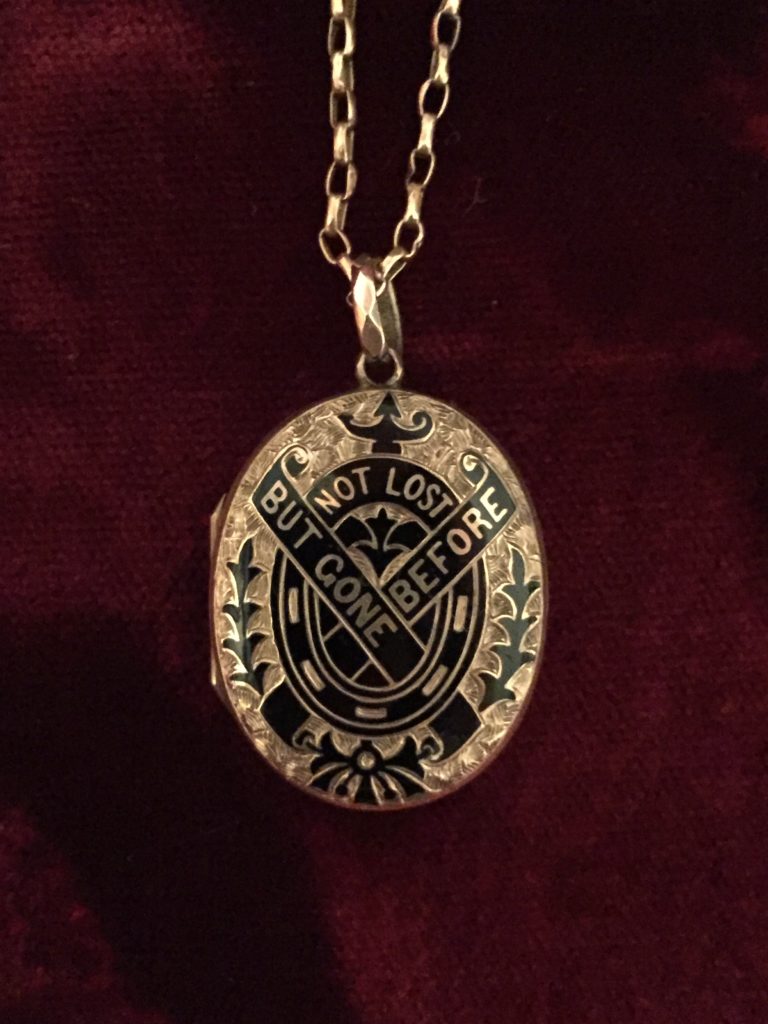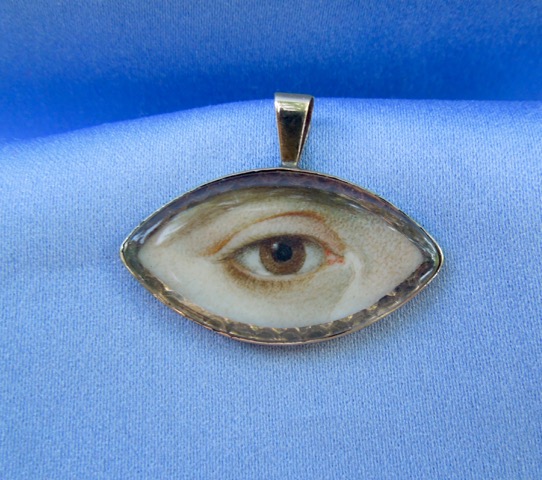‘In Memory Of’ – A Timeless Dedication For A Memorial Locket
‘In Memory Of’. Very few sentiments in mourning jewellery resonate so strongly over such a long period of time and cross over so many different boundaries of mourning paraphernalia. It is a statement of gravity that crosses many cultural perceptions as well, to become a statement of the fact from the self. Mourning, as a statement of grief, represented in jewels needs to have a direct and clear message. Many of the jewels where the question must be asked about its reason for being should be scrutinised as mourning jewels. This is due to the gravity of the sentiment transcending popular fashion (while sometimes adapting it) and reflecting what it is that the person who is wearing the jewel feels.
This is why ‘In Memory Of’ is such a perfect phrase for jewels. This piece from the latter 19th century still works in context today. For many, the lockets with the ‘In Memory Of’ sentiment are quite popular, being repurposed for another generation of mourning. Inside, hairwork that would have originally been placed is replaced with photography or even other mementoes of the person who is being mourned.
But where did the sentiment begin? The piece above shows a Roman 3rd century cameo with an earlobe being pinched. The inscription reads ‘MNHMONEYE MOY’ – ‘Remember Me’. While the sentiment of mourning and memorialisation being one that goes even further before this, as long as humans have been interacting in relationship-based societies and cultures, tokens of memorialisation have been utilised. But, the ‘memory’ of ‘remembering’ the person, such as this Roman piece, show the statement from an early age. From an early modern perspective, the integration of mourning rings into wills and the statements of posie rings from the 15th century show the sentiment of remembrance becoming standardised.
By the 18th and early 19th centuries, the sentiment was becoming popular as an inscription within Neoclassical jewels. From 1765, the Neoclassical period had dominated sentimental jewellery designs with their Romantic depictions of allegorical situations, both for love and death. With the standard urn/willow/weeping female scenarios, the plinths which the urns sat upon or the borders of the pieces were often inscribed with sentiments of mourning. Using ‘memory’ as the primary sentiment was becoming popular and did not clash with the humanist view of the ‘self’ that these jewels represented. It was a term that could be utilised in religiously Reformed societies, as well as traditional Roman Catholic ones.
By the 19th century, the locket which is the focus of this article was the standard. It was a statement that survived the Gothic Revival movement and the push back to traditional Christian views which was a counter to the Neoclassical period. This was only enforced by Queen Victoria and her influence upon the family as a unit, rather than the individual as being the focus for mourning. ‘In Memory Of’ as a statement of family grief works as well as the singular person in mourning.
Placed upon rings, lockets, brooches, stickpins and every variation of mourning accessory, the ‘In Memory Of’ sentiment dominated the 19th century and exists today through the re-appropriation of jewels, on tombstones, mourning ephemera and every peripheral of mourning. It does not denote a heavy statement of grief, but rather the simple fact. The loved one is remembered.











